Key takeaways:
- Breathwork enhances mental, emotional, and physical well-being by promoting mindfulness and intentional breathing techniques.
- Caregivers can benefit from specific breathwork methods, such as the 4-7-8 technique and diaphragmatic breathing, to manage stress and improve emotional clarity.
- Integrating breathwork into healthcare settings fosters deeper connections between caregivers and patients, creating a calming environment during challenging situations.
- Sharing breathwork with patients can lead to immediate emotional relief and improve the sense of community even in clinical settings.
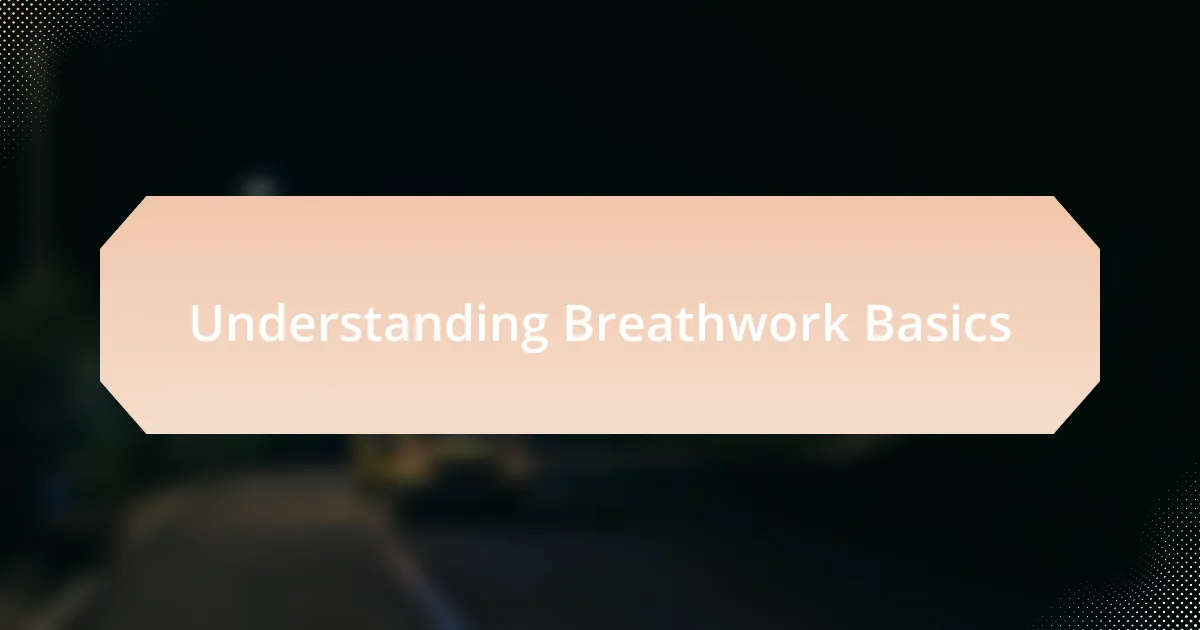
Understanding Breathwork Basics
Breathwork involves various techniques that focus on conscious breathing to enhance mental, emotional, and physical well-being. I recall the first time I engaged in a guided breathwork session; the simple act of paying attention to my breath opened a door to deeper emotional insights I didn’t even know I needed. Have you ever paused to notice how your breathing changes with your emotions? It’s fascinating how something as automatic as breathing can reflect our inner state.
At its core, breathwork encourages mindfulness, helping practitioners reconnect with their bodies and emotions. I remember feeling a wave of calm wash over me during a session, as if my breath was clearing away the clutter of daily stress and anxiety. Have you ever experienced that kind of relief from simply changing how you breathe? It’s a powerful reminder that our breath is more than just a physiological function; it’s a tool for emotional release and transformation.
Different breathwork practices can evoke various responses, from energizing to deeply relaxing. I’ve explored techniques like box breathing, which involves inhaling for four counts, holding for four, exhaling for four, and a hold again for four, and noticed an immense shift in my focus and clarity afterward. What if you tried this simple technique before a challenging situation? You might find that breathwork not only serves as a technique for relaxation but also as a catalyst for personal growth and reflection.
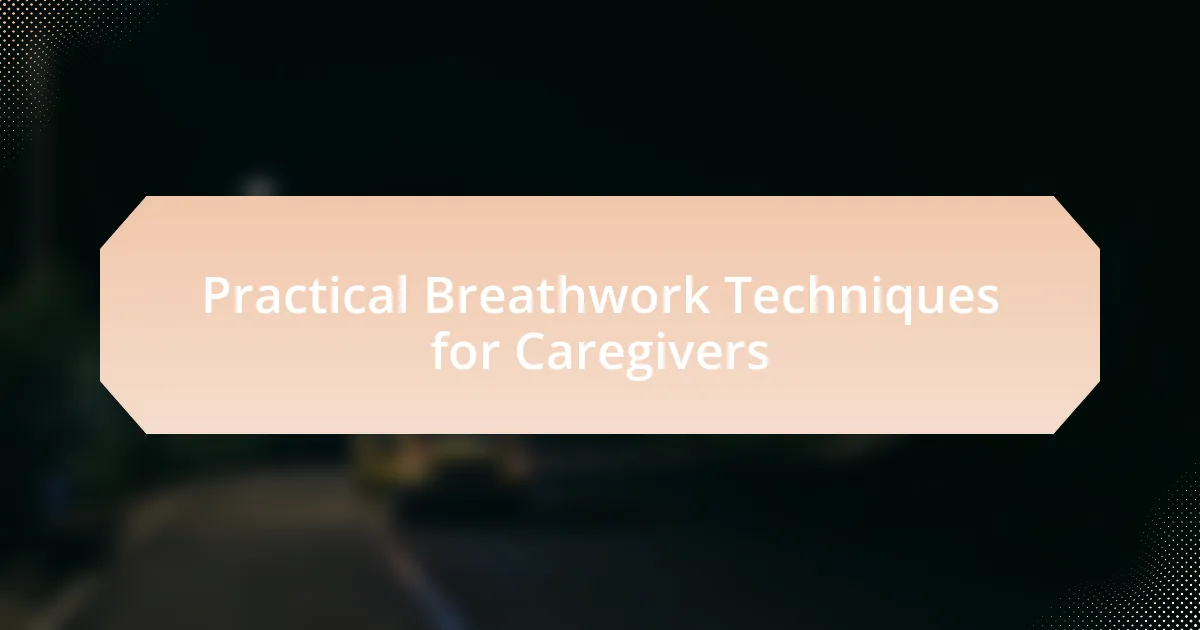
Practical Breathwork Techniques for Caregivers
Caregivers often face overwhelming emotional demands, and a simple technique I’ve found effective is the 4-7-8 method. By inhaling for four counts, holding for seven, and exhaling for eight, I’ve experienced moments of clarity amid chaos. Have you ever used your breath to create a pause in a hectic day? This method can anchor you, allowing space for calm before tackling challenging scenarios.
Another technique that’s made a difference in my practice is diaphragmatic breathing. This involves breathing deeply into your belly rather than your chest, which I find incredibly grounding. In those moments when I felt tension building, focusing on my diaphragm helped unlock a deeper relaxation. Have you tried this more holistic approach to breathing? I encourage you to explore how it might shift your energy, both in yourself and in your interactions with others.
Lastly, try incorporating breath awareness into daily routines. Whether you’re sitting with a patient or engaging with family, I’ve learned that taking just a few mindful breaths can change the tone of any situation. I often pause to inhale deeply and exhale fully before responding to a distressing request. Have you ever noticed how your breath can influence your emotional response? It’s remarkable how these small moments can enhance our ability to care for others with compassion and clarity.
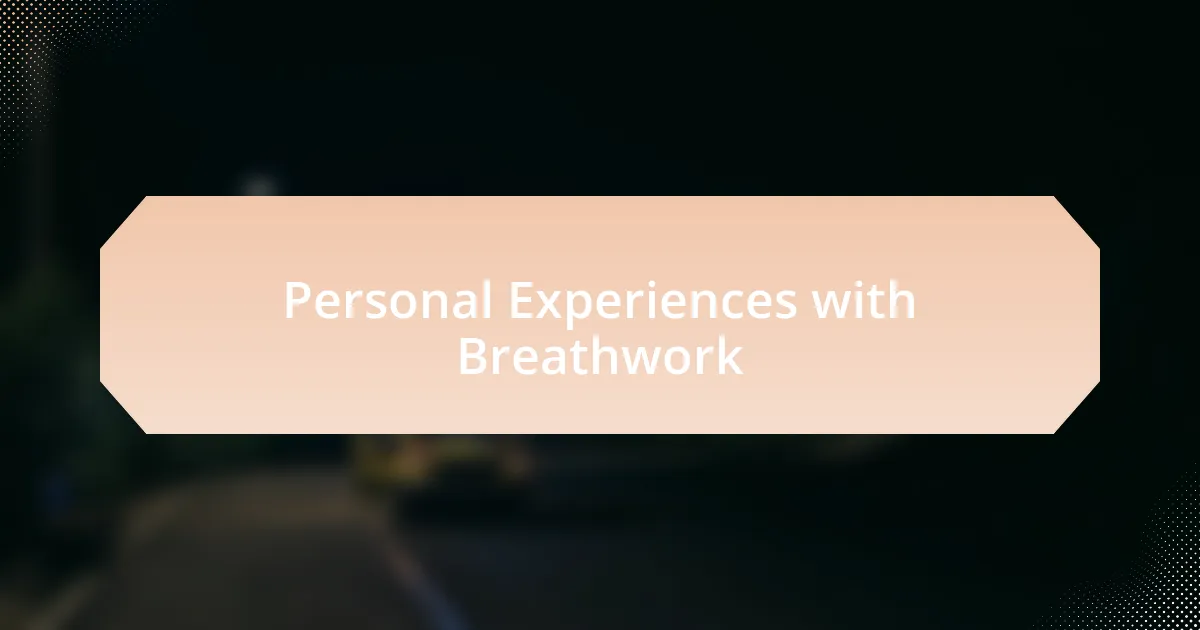
Personal Experiences with Breathwork
When I first started practicing breathwork, I was skeptical about its real impact. I vividly remember a moment in the hospital—a particularly grueling shift—when I decided to try a simple breathing exercise. Focusing on my breath as I counted to four, holding for a moment, and then exhaling slowly, I felt my anxiety gradually dissipate. Have you had a moment where something as simple as your breath seemed to change your outlook?
There was another instance when I was sitting with a patient facing a terminal diagnosis. The heaviness of the situation was palpable, and I felt an urge to connect on a deeper level. In that moment, instead of rushing to fill the silence, I intentionally engaged in breath awareness. I noticed how my slow, intentional exhales softened the atmosphere in the room. It was fascinating to see how our shared silence, punctuated by the rhythm of our breathing, created a profound sense of intimacy. Have you found that stillness can sometimes speak louder than words?
One experience stands out particularly: I was in a support group, where emotions were running high. Participants were sharing their stories, and the energy was tense. I suggested a brief breathwork exercise, and as we breathed together, the collective sigh of relief was almost tangible. Witnessing everyone soften and open up was a powerful reminder of how breath can unite us, even in our most vulnerable moments. Have you ever considered how your breath can be a bridge between hearts?
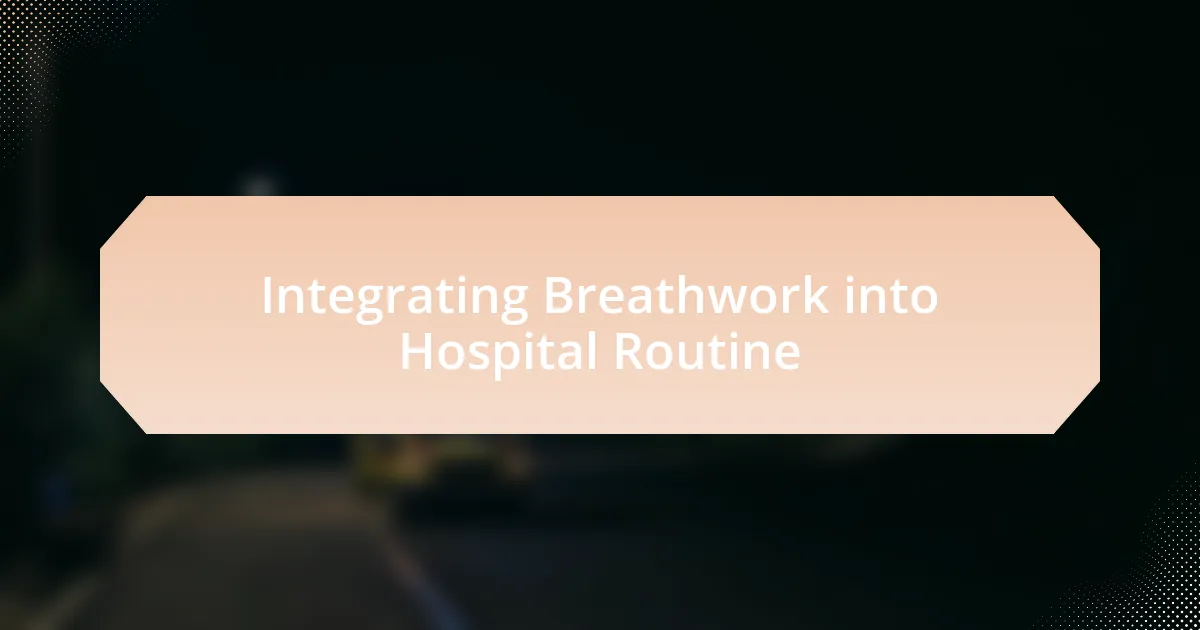
Integrating Breathwork into Hospital Routine
Integrating breathwork into a hospital routine can be both simple and transformative. I remember a particularly hectic afternoon when nurses were juggling multiple tasks. We implemented a quick five-minute group breathwork session before our shift, and it was remarkable to see how it shifted the energy in the room. Everyone walked away feeling more grounded and connected to each other, ready to face the challenges of the day together.
I often think about the importance of creating a calm environment in such a fast-paced setting. One time, while preparing for a family meeting, I took a moment to breathe deeply before entering. This small act not only centered me but also allowed me to approach the conversation with compassion and clarity. Have you ever noticed how a few deep breaths can reshape your perspective in tense environments?
In my experience, incorporating breathwork into patient care can foster enhanced emotional support. I recall sitting beside a patient undergoing treatment who was visibly anxious. When I suggested a short breath exercise, their tight shoulders began to relax. It struck me how a simple practice could bridge the gap between patient and caregiver, creating a space where healing could begin. Have you considered how integrating breath awareness might enhance the connection you have with those in your care?
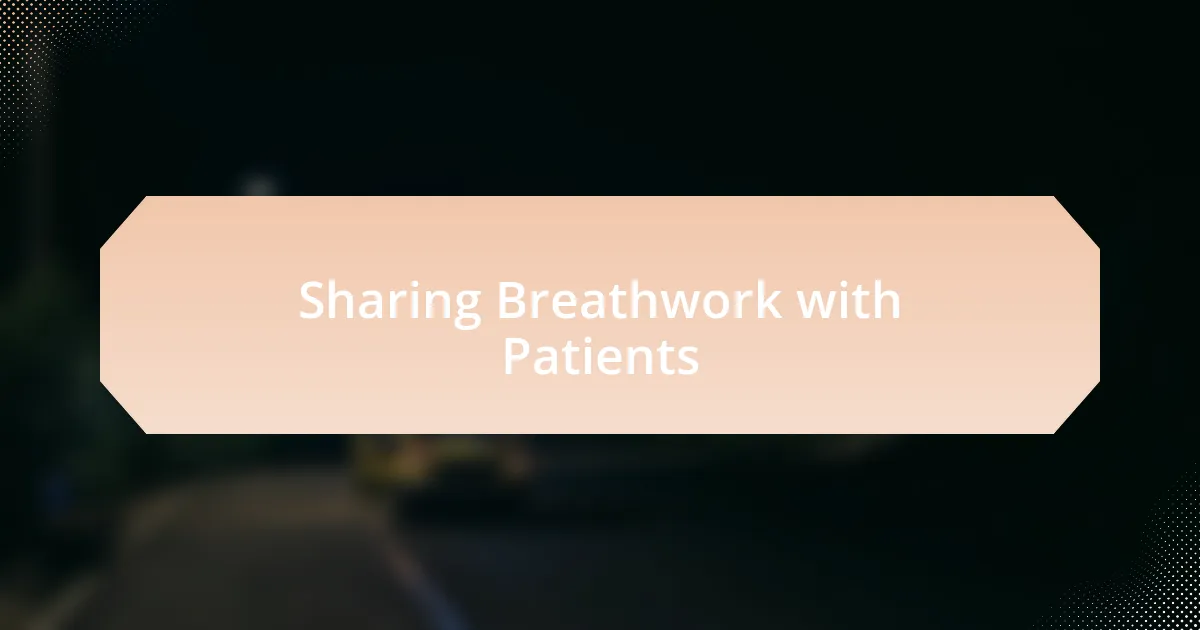
Sharing Breathwork with Patients
When I first started sharing breathwork with patients, I was surprised by the immediate impact it had. I remember one particular instance with a young woman preparing for surgery. I guided her through a simple breathing technique, and as we exhaled together, I saw her anxiety visibly diminish. In moments like this, it becomes clear just how powerful conscious breathing can be in helping patients regain a sense of control.
On another occasion, I facilitated a group breathwork session for patients in a waiting room. The initial skepticism from a few individuals quickly gave way to relief and connection as they shared their experiences afterward. It was heartening to witness strangers bonding over a shared breathing exercise, reminding me of the profound human connection that can emerge even in sterile, clinical environments. Have you considered how breathwork might serve as a bridge between isolation and community in healthcare settings?
I often reflect on the emotional nuances that arise during breathwork with patients. One memorable experience involved a gentleman grappling with grief. As we breathed together, moments of vulnerability surfaced, creating a profound space for shared healing. This process not only supported his emotional release but also deepened my understanding of the therapeutic power we hold as caregivers. How have your own experiences shaped your beliefs about the role of breath in emotional well-being?